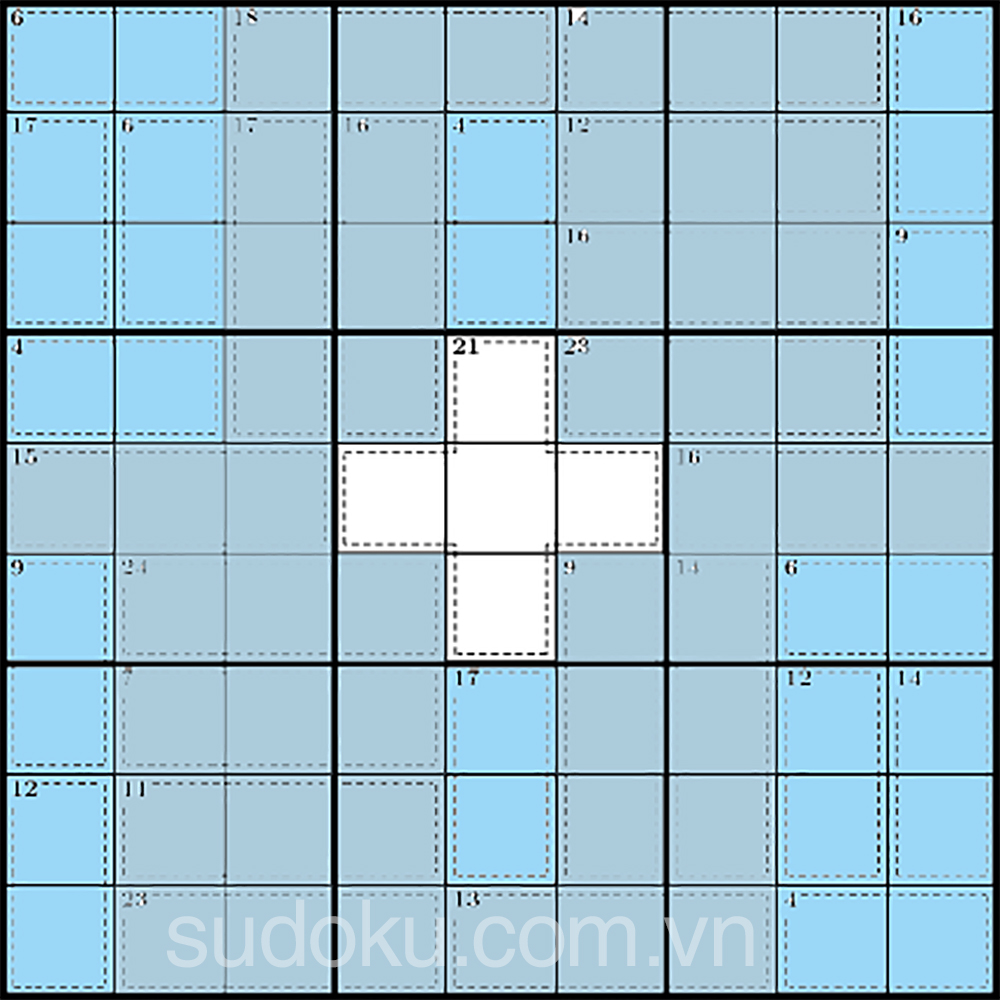Sudoku Killer is a more complex but engaging variation of classic sudoku that combines the rules of sudoku and “kakuro.” In this version, players not only need to think logically but also manipulate numbers quickly in their heads. Despite its intimidating name, Sudoku Killer is great for beginners — many say it’s easier to learn the basics than the classic version.
The goal of the game remains the same: fill in each row, column, and 3×3 square with numbers from 1 to 9 without repeating them. To solve Sudoku Killer, you need to understand the basic principles and apply simple strategies such as: combinatorial analysis, the rule of 45, and the method of elimination.
Key Differences from Classic Sudoku
In Killer Sudoku, there are no pre-filled numbers. Instead, you’ll see groups of cells outlined with dotted cages, each with a given sum. Your task is to place digits 1 through 9 so that:
No number repeats in any row, column, or 3×3 box.
The numbers within each cage add up to the specified sum.
Numbers inside the same cage cannot repeat.

Rules of the Game
The Basic Grid
The puzzle uses a 9×9 grid, divided into nine 3×3 boxes. You must fill in digits 1 through 9 without repetition in any row, column, or box. Unlike classic Sudoku, there are no starting numbers — only the cage sums serve as your clues.
Cages and Their Role
A cage is a group of connected cells, outlined by dotted lines. The top-left corner of each cage shows the sum that the numbers inside must equal. For example, a cage of two cells with a total of 3 can only contain the pair (1, 2).
Uniqueness of Numbers
Just like in regular Sudoku, numbers must be unique within each row, column, and 3×3 box. Additionally, numbers within the same cage must also be different, which makes the game both more challenging and more engaging.
Strategies and Methods for Solving Killer Sudoku
If you want to master Killer Sudoku, start with basic strategies and build up step by step. Below are some proven techniques that help both beginners and experienced players succeed.
The 45 Rule
This is the foundation of Killer Sudoku logic. The rule is based on the fact that the sum of digits 1 through 9 is always 45. If a cage or group of cages covers an entire row, column, or box, you can use this fact to calculate missing values. For instance, if known cells in a row already add up to 30, the remaining cells must total 15.
Combination Analysis
One essential technique is to analyze all possible number combinations for a cage. Each cage, based on its sum and size, allows only certain valid sets of numbers. For example, a two-cell cage with a sum of 16 can only be (7, 9), since (8, 8) would break the no-repetition rule. Recognizing these restrictions makes solving much easier.
Elimination Method
Another key step is ruling out impossible options. If a number already appears in a row or box, it cannot appear again within a cage in that same row or box. This also applies when certain totals become invalid. By systematically eliminating incorrect possibilities, you narrow down the correct answers.
Candidates and Notation
A more advanced technique involves working with candidates — the possible values for each cell. Writing small notes inside cells helps you keep track of options. This is particularly useful when analyzing overlaps between cages and their effects on each other. Efficient note-taking significantly improves both speed and accuracy.
Final Thoughts
Whether you’re a beginner or a seasoned player, Killer Sudoku offers a fantastic opportunity to challenge your logic and sharpen your problem-solving skills. Experiment with different strategies, and over time, you’ll develop your own methods for tackling even the toughest puzzles.
Enjoy the challenge — and may logic lead you to victory!
